Nandigram has stood up
March 30, 2007
By Saroj Giri
Everytime in India, large numbers of people, as in Kalingangar, Singur and Nandigram today, stood in a direct and antagonistic relation to capital and the state, a middle class ideology of alternative plans and people’s plans has not just acted to limit the initiative and political character of the movement to the ‘enlightened interests’ of the urban radical intelligentsia but, as a consequence, capital has instead ultimately gone ahead with its own original plans without even any kind of green restructuring. And this happened since the problem is always identified at the level of a particular technology or system of production (industrial modernisation) and not in terms of social relations, not in terms of class and power relations.
The suggested way out is then not the overthrowing of the existing class, social relations, relations of power, but a new mode of technology, a new way of, as they say, ‘relating to nature’. The question of who will control this new way of relating to nature, who and which class will be in power, the fact that the proposed new, alternative people’s plan will also be part of the regime of capital is not raised. Hence the middle class debate on displacement and rehabilitation, and people’s plans ultimately ends up justifying, providing the rationale for a possible restructuring of capital: worse, when such middle class initiatives take the form of a social movement it ends up rallying huge masses of people in the interests of capital. However we have not seen anything like this really take place in our country and this is not due to the radical character of such a social movement but since capital in India is so arrogant and powerful today that, given the extremely favourable class and political balance of forces, it does not, on this account, feel the need to restructure itself. This means that post-Narmada Bachao Andolan, the radical urban middle class is redundant, no longer needed and retrenched by capital.
This, however, has opened the space for a direct and antagonistic fight between capital and the state on one side and the people on the other. Nandigram and before this Kalinganagar represent this new juncture in the relationship between capital and the different social sections and classes. Reports from Nandigram seem to suggest that people are not just fighting to keep their land and their present means of livelihoodbut they are also destroying the relations of power that tied them to capital and the state: the CPIM after all is not exaggerating when it says Nandigram was beyond the reach of the law. Now the problem for the state is not just the setting up of the industrial plant there but of first establishing this relationship, of ending the ‘liberated’ status of Nandigram.
In the absence of any middle class radicals ‘from outside’ in the movement (for example, Medha Patkar also seems to be no more than a concerned visitor there) and the isolation of the local MP who happens to belong to the CPM, Nandigram is today unrepresentable. Different political forces willing to represent Nandigram are making their rounds to end its unrepresentability and put it in some relationship with one or the other sector of capital and the state so that while the land acquisition would not take place and the proposed plant would not come up there, it should not become another Maoist ‘hotbed’. It has therefore triggered off a clear polarisation in the Indian polity today between capital and broad masses of the people. And this polarisation is clear and the contradiction sharp since except for the CPM the rest of the left and social movements who are broadly siding with affected people are however not in there among the masses fighting the brutal might of capital and the state in both Nandigram and Kalinganagar: they are outside lamenting at the violence and ‘loss of life’ and busy dissociating themselves from the CPIM. The Maoists are of course a different story.
History
In perhaps the most obscene instance of the internalisation of dissent, a West Bengal minister recently claimed that the ongoing industrialisation of the state through SEZs seeks to undermine Fukuyama’s thesis of the end of history. While this claim is ridiculously bogus, its obverse is strikingly true for some voices opposing the SEZs: don’t large sections of social movements believe that there is no possibility of large systemic transformation and most such attempts at revolutionary transformation end up in one or the other form of totalitarianism. History has ended and we need to work towards bettering conditions under some form of a benign, reformed capitalism. In the CPIM and the social movements we therefore have two forces: one speaking in the name of the onward march of History and the other opposing precisely the rationality of such a History which only tramples peoples’ lives and autonomous ways of life. If one is speaking in the name of History, a History which is objectively given from before, the other is opposing what happens in the name of History, History as a ruse to justify power.
Both positions are, however, complicit in exonerating itself from History as such, from the making of History. In treating History as identical to the depredations of capital or as merely an ideological construct used to legitimise certain regimes of power, both positions exclude the possibility of people as the makers of history. This is the possibility opened up by Nandigram which refused to submit to the dictates of capital nor to any kind of ‘pro-people’ representation or bargaining for the right kind of technology or rehabilitation package. Nandigram did not just reject the setting up of the plant but also freed itself, at least temporarily, from the relations of dominance and subjugation that tied it up with various sectors of capital and its representatives. Thus they have actually displayed the energy and creativity of making history and have actually disproved the thesis of the end of history. Again here Nandigram’s convergence with the Maoists cannot be underestimated.
The convergence of the positions of the CPIM and of the urban intelligentsia-led social movements, therefore, cannot be underestimated. Their refusal to view people as the makers of their own history comes out very clearly also in the debate on the question of the impact of industrial plants in the concerned areas. In its broad essentials the CPIM argues that industrialisation will create much needed employment in the state while the social movement position is that it will lead to displacement and the destruction of the means of livelihood. Now this is in many senses a sterile debate since there is no basic difference between them. Both the positions view the problem in terms of what impact the new technology or plant has on the people in the region so that each tells only half the story: for isn’t it true that both displacement and the creation of jobs would take place once the plants come up so that, within this framework, what position one takes now depends on a kind of cost-benefit analysis of whether the given employment generation justifies the displacement of people. Add to this the entire issue of rehabilitation package and other economic benefits to thedisplaced and then the entire issue turns on narrow economic benefits, compensation and relief packages. What is overlooked in this framework, is that regardless of whether people, in narrow economic terms, get a good or a bad deal, they are already in a relationship of dependence with capital and hence are regarded as merely victims of modernity.
The problem is that formulating the problem in terms of the impact of the industrial plant on the people or the region completely overlooks the fact that the setting up of these plants and industrial units are the expression of the relationship in which the people and the area stands to those who wield power both within that area and outside. The proposed plant or the technology to be used and the fact of displacement are an expression of the social relations that exist both in Nandigram and in society as a whole. Capitalist or feudal social relations existed in Nandigram before the present attempts at land acquisition and it is precisely since it was already enmeshed in such relations that capital and the state attempted to set up an industry there.
Now in most cases of the movement against displacement from industrial projects, social movements have failed to challenge these oppressive social relations since they do not view displacement/rehabilitation as a reflection/symptom of these relations, of the particular form of society. The coming up of the industrial plant is viewed as something coming from outside, which will, for social movements, lead to displacement and loss of livelihood and, for the CPIM, lead to much need employment generation in the state. It is true that the technology, the capital equipment etc come from outside the village or perhaps from even outside the country but that itself is not the problem. The problem is that it usually comes as a further intensification of the oppressive social relations that exist in Nandigram or in the country as a whole: that Nandigram is in the chain of capitalist and feudal exchange and production, whose political form is provided by its representation in Parliament.
Nandigram today has rebelled against these oppressive relations and have refused to be represented in the political processes of Indian democracy. The events there so far testify that they are not just against the industrial plant or for a better rehabilitation package but against the very power relations that seek to represent them in any form, including any mediation by social movement or NGOs. Further, it also forecloses radical middle class debates on big dam versus small dam, nature-friendly technology versus nature-destructive technology that are largely forgetful that capital, particularly late capitalism, can operate as much through small dams, wind-mills or through solar energy. The essential question is who controls, who has the power to decide, what are the social relations within which the technology, the industry, the dams operate. In rejecting not just the plant or the fact of displacement but all channels of representation and rehabilitation by all factions of capital and the state, Kalinganagar and Nandigram stand in an immediate and antagonistic relationship with capital today. No wonder various leaders of the CPIM are stressing on the role of Naxalites in fomenting trouble in Nandigram.
Conclusions
Kalinganagar and now Nandigram stand out since instead of making the cost-benefit calculations through the displacement/rehabilitation, livelihood-loss/job-creation, big industry/small industry ledger, they have refused any kind of quid pro quo, any truck with any faction of capital and the state. As the state ministers bitterly complained, Nandigram has been out of the reach of the law and the state since the last two months: like the banned Maoists it has outlawed itself. It has de facto seceded providing no chance to capital and the state to show their human faces, to provide jobs, to bring in perhaps a more eco-friendly technology which will not lead to displacement, or to put in place a more robust, inclusive democratic process.
This only means that the people of Nandigram have stood up and are defending themselves. In exiting from all relations with capital and the state their lives had no value and were killed. Various concerned citizens, human rights groups, and social movement initiatives are trying to side with the victims of the massacre and have called for a judicial inquiry and have upheld their right to dissent and protest. The way however to save them is not by bringing Nandigram back into the relations of capital and the state, by revalorising them as partakers in the system, but by reversing the flow of traffic: joining the people in Nandigram in seceding from the existing social relations. Marx once said, the educators need to be educated. One can today say, the saviours need to be saved. There is a real danger today that civil society initiatives might be used by capital and the state to bring Nandigram back to the ‘democratic process’ and stop it from slipping into the hands of the Maoists. Nandigram, unmediated and unrepresented, is what needs to be defended and replicated elsewhere in the country today. This will be the first step in refuting the thesis of the end of history.



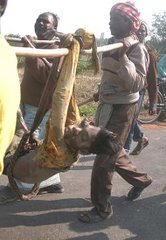
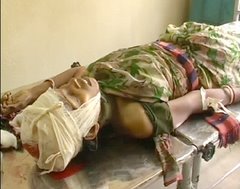

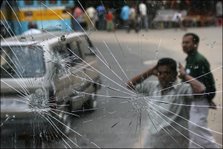
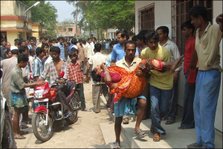

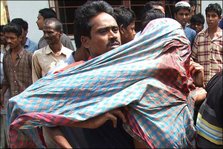


No comments:
Post a Comment